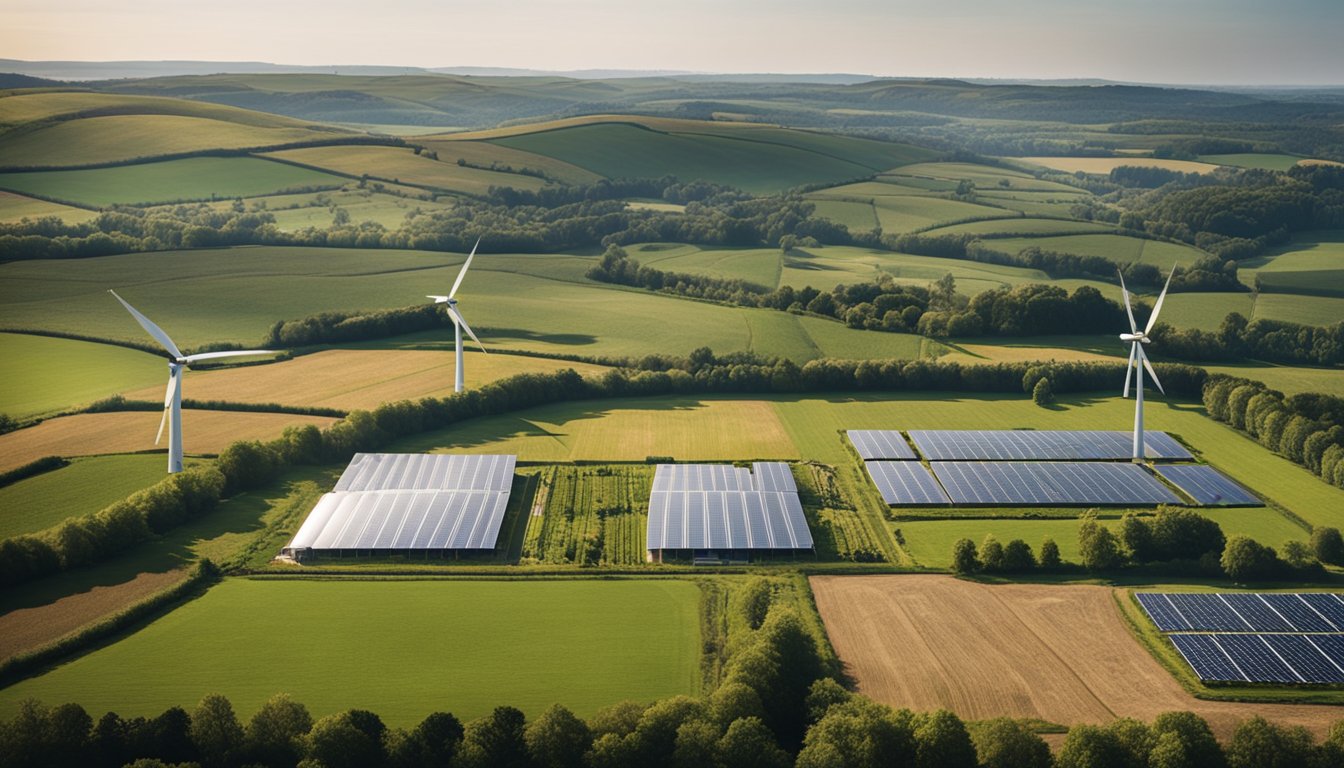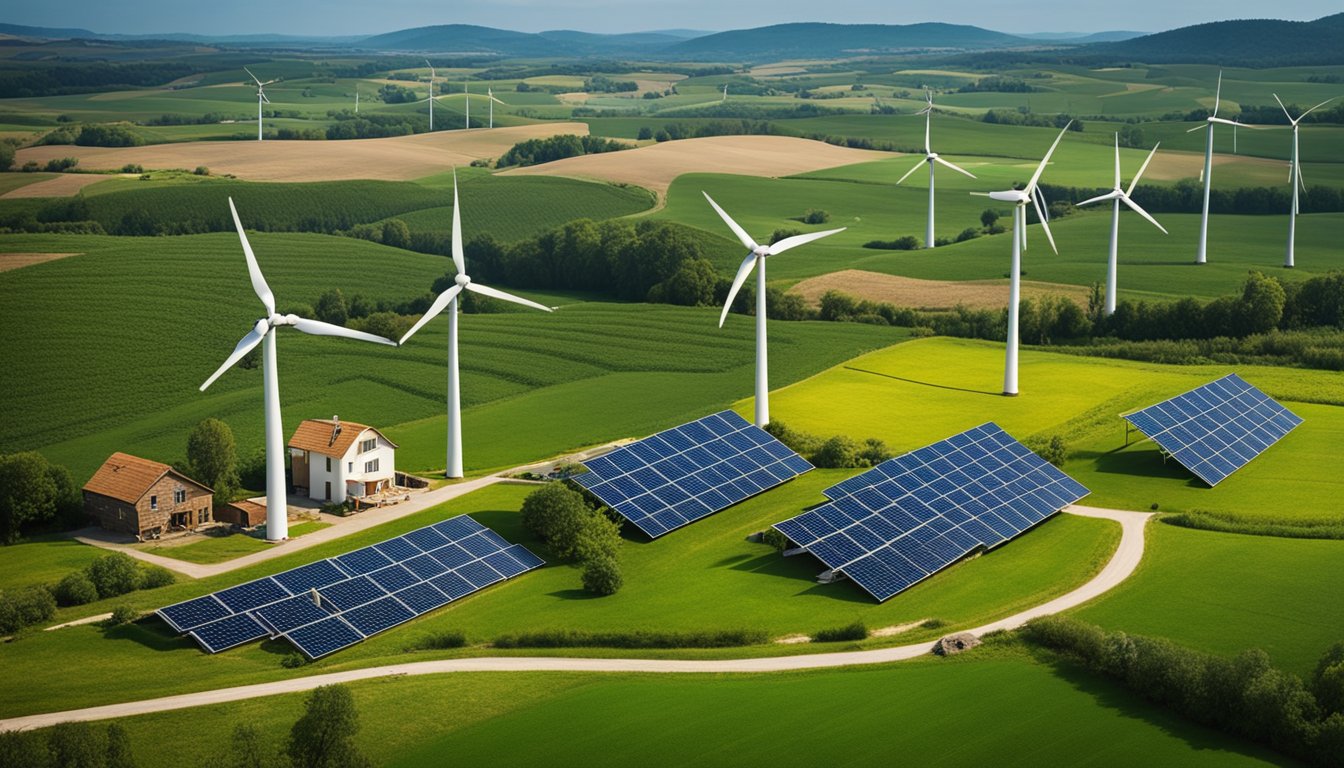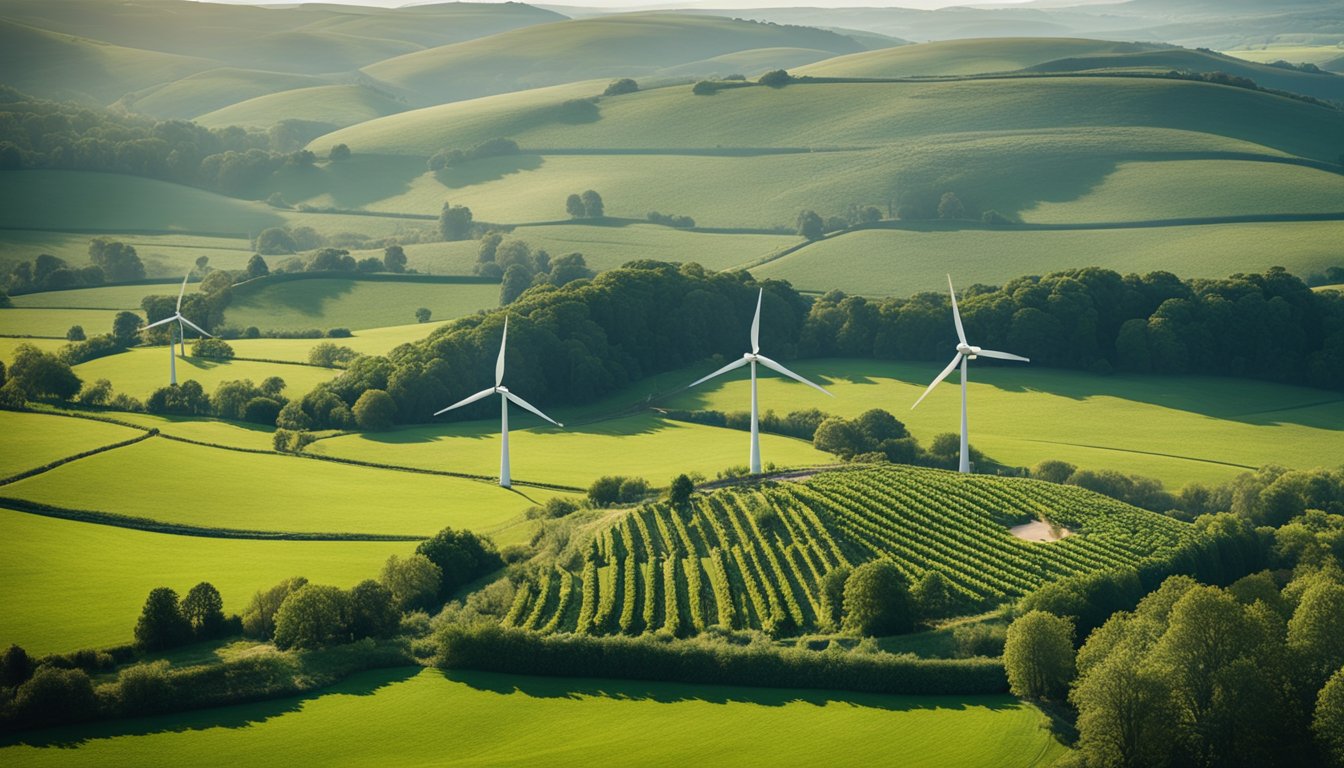Late updated: 04 May 2025 13:05
Written by: Oliver Bennett
Green Technologies For Sustainable Rural UK Living: Advancing Eco-Friendly Innovations
As the world faces increasing environmental challenges, the importance of green technologies in promoting sustainable living becomes more evident. In rural areas of the UK, these technologies are transforming the way we interact with our environment. By investing in renewable energy sources like wind and solar, and implementing modern green architectural practices, rural communities can significantly reduce their carbon footprint while enjoying a higher quality of life.

Green technologies are not just about reducing emissions; they offer a holistic approach to enhancing the resilience of rural communities. Access to cleaner energy options, sustainable land use, and modern eco-friendly housing developments all contribute to a more sustainable future. The implementation of these technologies is supported by significant investments and innovative research projects aimed at reimagining land use and soil health.
Our exploration of these advancements reveals the societal and economic benefits driving the rural green transformation. From improved energy efficiency to new job opportunities, the advantages these technologies provide are crucial for fostering long-term sustainability. By addressing frequently asked questions, this blog post aims to provide a comprehensive understanding of how green technologies are shaping sustainable rural UK living.
Key Takeaways
- Renewable energy is crucial for reducing carbon footprints in rural UK.
- Green technologies enhance community resilience and eco-friendliness.
- Societal and economic advantages drive rural sustainability efforts.
Foundations of Green Technologies For Sustainable Rural Living

Our exploration of green technologies focuses on their role in enhancing sustainable rural living in the UK. This involves effective utilisation of renewable energy solutions, energy efficiency, and the development of sustainable homes which play a crucial role in reducing environmental impacts.
Renewable Energy Solutions
Renewable energy is pivotal in our efforts to achieve sustainability and combat climate change. In rural UK settings, technologies such as solar panels and biogas systems provide viable alternatives to traditional energy sources. Solar panels, for instance, harness sunlight to generate electricity, reducing reliance on fossil fuels. Biogas systems, often powered by organic waste, convert waste materials into usable energy, offering both environmental and economic benefits. These technologies not only cut down carbon emissions but also contribute to achieving net zero targets. Expanding infrastructure for these renewable solutions is key to ensuring their accessibility and effectiveness in rural communities.
Energy Efficiency and Decarbonisation
Improving energy efficiency is essential for reducing energy consumption and lowering carbon emissions. By implementing decarbonisation strategies, rural areas can significantly decrease their environmental footprint. Technologies such as energy-efficient lighting, smart meters, and heat pumps help us optimise energy use. These innovations not only contribute to lowering energy bills but also support the transition towards a sustainable energy sector. The move towards net zero requires investing in technologies that reduce energy waste and promote environmental sustainability. Encouragingly, the adoption of energy efficiency measures is gaining traction as communities recognise the dual benefits of cost savings and environmental protection.
Sustainable Homes and Infrastructure
The development of sustainable homes is fundamental to fostering environmentally-friendly rural living. Incorporating materials and designs that promote resource conservation and energy efficiency is paramount. For instance, homes equipped with proper insulation and low-carbon heating systems minimise energy loss. Green infrastructure, such as water conservation systems, further enhances sustainability. Engineering innovations in construction practices and materials are crucial in reducing the overall environmental impact of our homes. By prioritising sustainable development in our housing and infrastructure, we can ensure that rural communities thrive while protecting the environment. These efforts are vital in aligning with broader environmental goals and safeguarding future generations.
Societal, Economic, and Policy Drivers for Rural Green Transformation

In the transformation of rural living towards sustainability in the UK, various societal, economic, and policy factors play significant roles. From investment in green technologies to community engagement and policy making, each driver contributes uniquely to facilitating this change.
Investment, Finance, and Business Innovation
Investment in green technologies is crucial for fostering economic growth in rural areas. Financing these technologies can be achieved through public and private sectors collaborating on innovative funding models. Business innovation serves as a catalyst, encouraging entrepreneurship and green industry advancements.
With the UK government providing financial incentives, businesses are encouraged to adopt sustainable practices. Meanwhile, rural manufacturing and industries are increasingly focusing on sustainable approaches to production and trade.
Community Engagement, Skills, and Education
Community engagement acts as a backbone for societal transformation. It involves educating rural communities about the benefits of sustainable living. Programmes focused on spreading knowledge create pathways for skills development and re-skilling in emerging green industries.
Training initiatives and the apprenticeship levy offer employment opportunities, reinforcing social cohesion and promoting health and gender equality. By investing in the capabilities of locals, we can drive rural innovation and economic sustainability.
Policy, Governance, and Environmental Strategies
Effective policy and governance frameworks are necessary for steering the transition towards greener rural living. Policies that underline environmental sustainability focus on reducing emissions, effective taxation, and encouraging sustainable agriculture and fisheries.
The UK government plays a pivotal role in establishing transparent governance structures and issuing policy recommendations. The aim is to create a regulatory environment that supports environmental strategies and resource management.
Rural Sectors and Case Studies
Several rural sectors, such as agriculture and resource management, showcase successful adaptations to green technologies. Case studies from regions like Carmarthenshire illustrate the role of rural Further Education Colleges (FECs) in facilitating transformative innovation.
These case studies demonstrate how targeted strategies can lead to improved economic and environmental outcomes. Events highlighting these successes serve as platforms for sharing best practices across other rural communities.
Digital and Artificial Intelligence Solutions
Digital technology and AI hold transformative potential for rural communities. AI aids in data analysis, providing insights into efficient resource management and sustainable solutions, such as precision agriculture.
By utilising AI, rural regions can enhance productivity while minimising environmental impacts. This technological integration is a vital step towards a more sustainable future, aligning digital advancements with the needs of rural sectors.
Sustainable Transport Systems
Sustainable transport systems are vital for environmental and economic transformation. Investing in public transport reduces the carbon footprint and promotes accessibility. By developing infrastructure that supports electric and low-emission vehicles, rural areas can reduce reliance on fossil fuels.
Such initiatives foster social cohesion by connecting communities and enhancing access to education and employment. Transport solutions must incorporate long-term strategies for sustainability, ensuring they align with the broader goals of reducing environmental impact.
Frequently Asked Questions

In exploring green technology's role in rural UK living, we focus on its benefits, job opportunities, successful housing developments, and community contributions. We also examine design principles ensuring eco-efficiency and steps homeowners can take towards eco-friendliness.
How can rural areas in the UK benefit from green technology for sustainable living?
Rural regions can leverage renewable energy resources such as solar panels and wind turbines to reduce reliance on fossil fuels. This technology supports local food production by enhancing water management systems and improving soil fertilisation techniques. It also facilitates efficient transportation solutions like electric vehicles or community car-sharing schemes.
What job opportunities are emerging from the adoption of green technologies in rural parts of the UK?
The transition to green technology opens roles in renewable energy installation and maintenance. Agricultural sectors benefit from positions focused on sustainable farming practices. Innovative startups are offering jobs in green tech innovation, including research and development in cutting-edge technologies contributing to eco-friendly transformations.
What are some successful eco-friendly housing developments within the UK?
We see notable eco-friendly housing projects like BedZED in London, which aims for zero carbon emissions. The Lammas Eco Village in Wales combines low-impact housing with agricultural self-sufficiency. These projects demonstrate the practicality of sustainable design and offer replicable models for rural areas.
What design principles and technologies are being implemented in sustainable housing developments to ensure eco-efficiency?
Many developments incorporate passive solar design, natural insulation, and water-saving technologies to maximise resource use. Smart home systems regulate energy consumption. Materials such as recycled timber and locally sourced stone contribute to reducing environmental impacts.
What steps can homeowners take to make their properties more eco-friendly within the UK context?
Homeowners can adopt solar panels and energy-efficient appliances. Improving insulation and switching to LED lighting are cost-effective measures. Installing rainwater harvesting systems aids water conservation. Participation in local green initiatives further enhances collective sustainability efforts.
How can communities contribute to sustainable living by using green technology?
Communities are progressively implementing shared renewable energy projects, such as local wind farms, which benefit multiple households. Setting up community gardens and allotment spaces enhances local food networks. Engaging in educational programmes raises awareness and supports skill development in sustainable practices.
